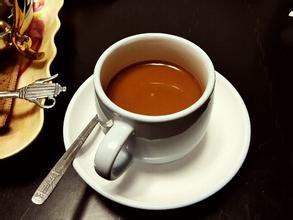Coffee roasting curve how to see flavor description taste treatment method production area variety grinding scale introduction
How to describe the Flavor of Coffee Baking Curve introduction to the Grinding scale of Coffee varieties produced by Taste treatment
With the continuous absorption of heat, more and more volatile gases (mainly water vapor) accumulate in the coffee beans, which causes the pressure inside the beans to far exceed the external atmospheric pressure, even reaching 25 atmospheric pressure (2533 kPa). The internal pressure is so high that it is like a small bomb that is finally enough to tear the structure of the raw coffee beans. This critical moment is called First Crack.
In a sense, as long as there is an explosion of coffee beans, they can be cooled, ground and drunk, but it is still a very shallow baking degree, which may not be the best baking degree we want. Next, we should pay close attention to the stage of roasting, observe the color of coffee raw beans by sampling, smell the aroma changes of coffee raw beans, find the best baking degree, and then cool it decisively. We know that the ingredients in raw coffee beans are in the following order: sugars, moisture, fatty substances, proteins, acids, minerals, alkaloids (such as caffeine) and other volatile aromatic substances. The content of these substances essentially determines the flavor of a cup of coffee drink.
In the process of recording the baking curve, carefully blindly test each batch of baked beans, record them, and accurately grasp the key elements, you can easily get the taste of coffee beans! Remember that each batch of coffee beans has a different baking curve and roasting methods.
The environmental factors of raw coffee beans in the producing areas will also affect the quality of raw coffee beans. The rainfall in the producing area this year and last year, or the drying process of coffee before export, is also one of the key points.
High-altitude and ripe coffee beans usually last longer and have a longer life. Because of the high density of raw coffee beans, if the dry environment is good, the taste of the coffee itself will not change much.
Out-of-season coffee beans are not good, and old coffee is sometimes added to some coffee varieties. to put it simply, African coffee beans taste clean, bright and slightly thin when fresh. After being placed for a period of time, the volatile aroma of the coffee is thicker and sweeter.
Bake, cup test, bake, cup test! After continuous adjustment and taste of different coffee curve roasted coffee, so that the taste of coffee to achieve better!
Use your senses: eyes, nose, ears, and mouth to learn more about the characteristics of coffee. Master the perfect baking curve.

Important Notice :
前街咖啡 FrontStreet Coffee has moved to new addredd:
FrontStreet Coffee Address: 315,Donghua East Road,GuangZhou
Tel:020 38364473
- Prev

The comparison between iron pickup and bourbon Coffee beans Flavor description Processing method Manor area Introduction
The comparison between iron pickup and bourbon The flavor description of coffee beans The introduction of the estate production area "Typica" iron pickup, the name sounds very majestic, but in fact it is not so strong Its constitution is weak, disease resistance is poor, easy to catch rust leaf disease, fruit yield is also small. It is one of Ethiopia's oldest native varieties, and many Arabica are derived from iron pickups! Tepika parietal leaf
- Next

Flavor description of Arabica Coffee Powder introduction of grinding degree of varieties produced by taste treatment
Arabica Coffee Powder Flavor description Taste treatment area varieties grindness introduction Coffee beans must be used in sufficient portions, too little coffee powder may lead to insipidity, but not too much at a time. The standard amount of coffee is: brew a cup of coffee (about 180cc) with two flat tablespoons (about 15 grams) of coffee beans (powder). Generally speaking, the most suitable water temperature for brewing coffee is taken.
Related
- Beginners will see the "Coffee pull flower" guide!
- What is the difference between ice blog purified milk and ordinary milk coffee?
- Why is the Philippines the largest producer of crops in Liberia?
- For coffee extraction, should the fine powder be retained?
- How does extracted espresso fill pressed powder? How much strength does it take to press the powder?
- How to make jasmine cold extract coffee? Is the jasmine + latte good?
- Will this little toy really make the coffee taste better? How does Lily Drip affect coffee extraction?
- Will the action of slapping the filter cup also affect coffee extraction?
- What's the difference between powder-to-water ratio and powder-to-liquid ratio?
- What is the Ethiopian local species? What does it have to do with Heirloom native species?

